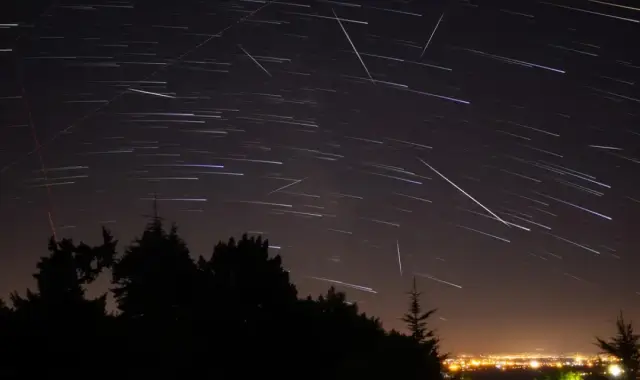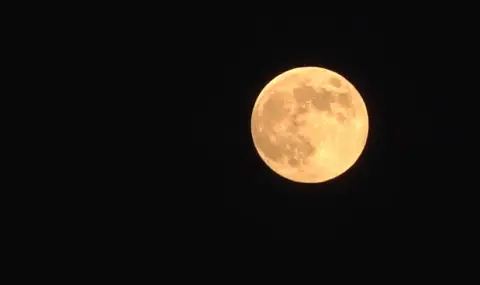The last "supermoon" for the year lit up the night sky in our country last night, reported BNT.
For the fourth time this year, the moon has reached its closest point in orbit to Earth. At exactly 11:28 p.m. local time, we could best enjoy her full image.
The phenomenon is also called the "Beaver Moon" because at this time of the year beavers are preparing for winter.
The supermoon is always a breathtaking sight, but this time it's almost full and is expected to obscure all but the brightest 'shooting stars' when the Leonid meteor shower reaches its peak this weekend, reported the Associated Press.
The Leonids are known for their high-speed meteors, which can move at a speed of about 70 kilometers per second, adds BTA.

"Unfortunately, observing conditions this year will be affected by the near-full moon," said Shyam Balaji of King's College London. "Watching in the early morning hours when the moon is lower in the sky can improve your chances of seeing more meteors.
Under ideal conditions, sky watchers can see up to 15 "shooting stars" per hour from the Leonid meteor shower.
This year peak activity on Sunday will occur when the Moon is 98 percent full. The Leonids meteor shower will continue until December 2. Meteor showers are usually most visible between midnight and pre-dawn. It is easier to see "falling" stars under a dark sky, away from the city lights. Meteor showers are also most noticeable on cloudless nights when the Moon is waning the most.
Although they do not present an impressive spectacle like the famous August Perseids and December Geminids, the "humble" Leonidas also have a lot to offer. The radiant of meteors from this stream (the apparent point from which they appear) is located in the constellation Leo, from which it derives its name.
The Leonids, whose parent body is comet 55P Temple-Tuttle, are one of the oldest known meteor showers, as well as one of the fastest. The Leonids travel at about 70 kilometers per second and are considered to be among the fastest meteors. For this reason, they are difficult to track effectively with binoculars and telescopes.
October offered a rare celestial spectacle - the year's brightest supermoon combined with a passing comet.
The next big meteor shower is the Geminids, which peaks in mid-December.
